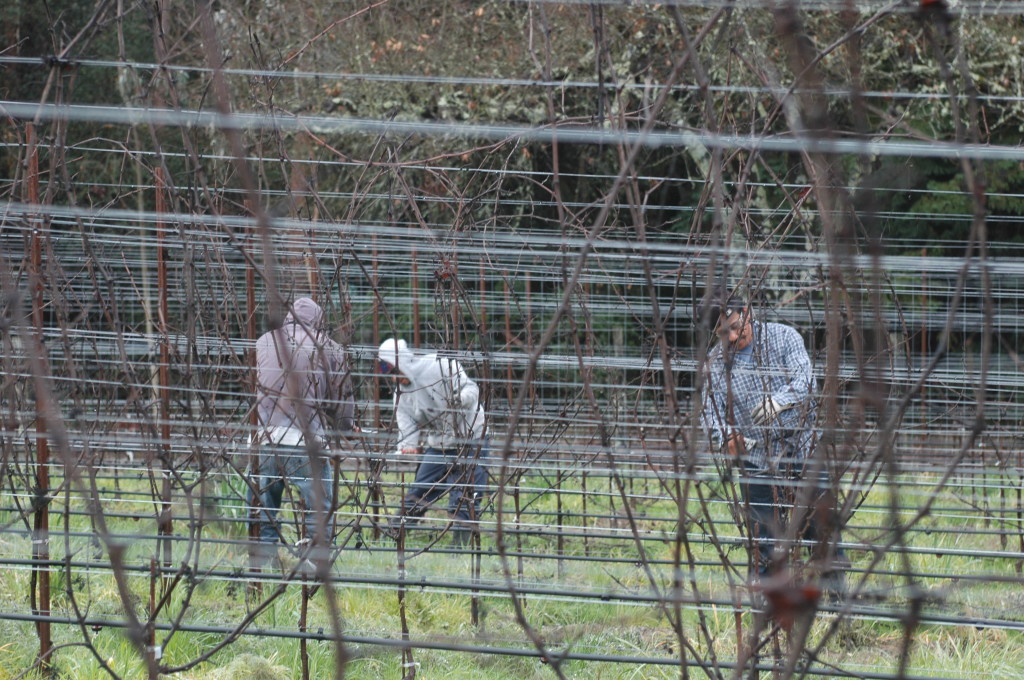In the “It Never Gets Old” category, we woke up early Tuesday morning to a line of cars parked in the vineyard. That can only mean one thing: It’s time to begin this year’s growing season by pruning the vines. When to prune and how to prune are the first of many decisions we make each growing year. In almost every respect, they are the most important decisions.
When to prune?
The tender spring growth of a vine can be killed by frost, and pruning temporarily stunts that growth. Since we don’t use water or wind machines for frost protection, we strategically delay pruning as long as possible in a hope to delay new growth and get us beyond the worst of frost season. In a year like this one, when winter never settled in and spring (and the frost season) seems right around the corner, a little delay is a good thing.
How to prune?
Each cane of our one-year-old wood on the vine has a bud every 4-5 inches. Each bud produces one or two shoots (new wood) and each shoot will normally produce one or two clusters of grapes. So, the more buds we leave on a cane, the more fruit we will get and the harder the vine will have to work to ripen that fruit. The fewer buds we leave on a cane, the less fruit we will get, and the vine will take the excess energy to grow foliage. In other words, if we get greedy and set too much fruit, the grapes won’t ripen properly, and if we set too little fruit, we’ll spend the rest of the summer hacking the vines back like we were breaking trail through a jungle. If we get it right, the vines will grow happily, with little input from us beyond occasional encouragement.
Balance through consensus
Our objective is to create balance—set enough fruit so that the vine ceases growing foliage around veraison, and then has enough foliage that it can ripen the fruit adequately so we can deliver prime Laguna Ridge Pinot Noir fruit to Kosta Browne at the end of the season. If only the vine could talk, we’d know exactly what to do. Instead, we spend a lot of time talking to vineyard manager Ulises Valdez, viticulturalist Kris Lowe, and Kosta Browne’s viticulture advisor Greg Bjornstad. Vines are examined, chins are stroked, the ground is toed, and a consensus is reached. Our vines are still young so we don’t want to stress them by setting a full crop--5-6 buds per cane seems right (up from last year’s 1-2 buds per cane), with discretion granted to the experienced and capable vineyard workers to make their own judgments on a plant-by-plant basis.
Greg had a great analogy that captures the spirit of the early growing season. He said that we are like producers of a play. We cast the actors and crew, rehearse, give everyone the chance to learn their lines, and prepare as best we can. But on opening night, when the curtain goes up, anything can happen.
Now that the rains have paused long enough for our intrepid vineyard workers to move along the rows and prune, we’re off and running. We hope it is a great year!





